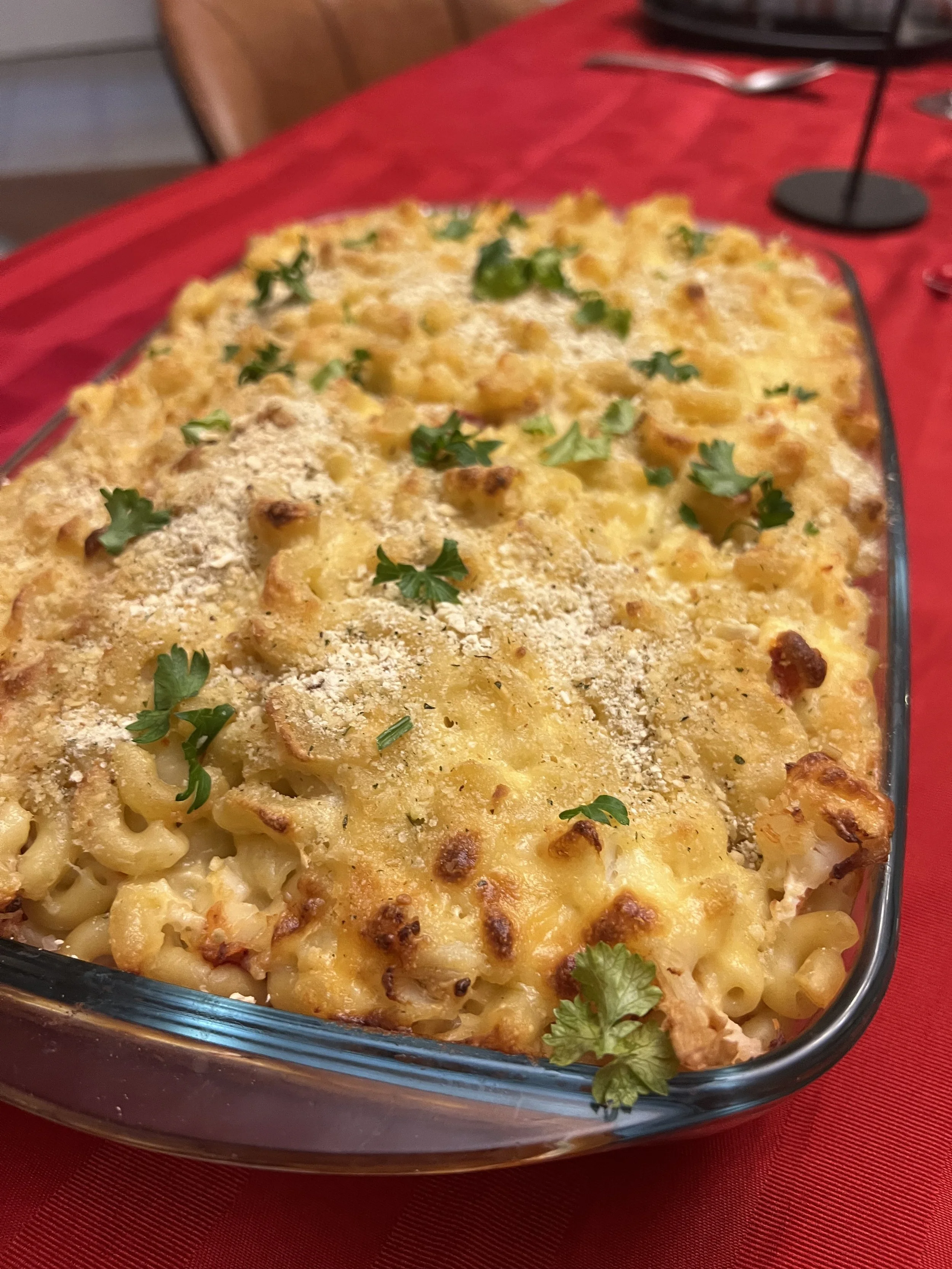Baked Lobster Macaroni and Cheese
The first time I had lobster mac and cheese was at a restaurant. Ever since, I’ve ordered it whenever I see it on the menu. Then I started to ask myself, “Why can’t I just make this? Surely it can’t be that hard!”
I know you’re expecting to see that I found it really hard. But no, luckily it was so simple! I couldn’t stop wondering why this wasn’t a staple in my menus. But then I thought about the price of lobsters and quickly remembered why! Haha!
So let’s go through the process, shall we?
Choosing the right lobster tails
I like to buy freshly caught lobsters from the fishmongers as much as possible. But where it’s not possible, I buy frozen lobster tails and pay attention to the appearance and size. The larger, the better, of course! Some quick tips I use are as follows:
Freshness: Look for lobster tails that are freshly caught. Fresh lobster should have a sweet aroma and a clean, briny scent of the sea. Check for lively movement in the tail. If the lobster tail curls tightly when touched, it's a sign of freshness. Avoid lobster tails with a strong ammonia odor, as this indicates spoilage. If you're purchasing frozen lobster tails, check the packaging for any signs of freezer burn or ice crystals. High-quality frozen lobster tails should be well-sealed and free from freezer burn.
Size: Lobster tails come in various sizes, so choose based on your preference and recipe requirements. Larger tails may be preferable for grilling, while smaller tails are suitable for a variety of dishes. For this recipe, you want them as large as possible, so you have enough lobster to geta good chunk in every forkful of the dish.
Cold-water vs. Warm-water Lobster: Cold-water lobster tails are typically considered more flavorful and have a firmer texture. Lobsters from cold waters, such as Maine or Canada, are highly prized. Warm-water lobster tails, often from the Caribbean or Florida, are also tasty but may have a slightly different flavor and texture.
Appearance: Look for lobster tails with a bright and consistent color. They should have a natural, translucent appearance with no discoloration or off-putting shades. The shell should be intact without any cracks or blemishes. A smooth and unblemished shell is an indicator of good quality.
Peeling the Lobster Tails
The key is to let the lobster tails cool for a few minutes after cooking. This makes handling them easier.
Crack the Shell: Hold the lobster tail with one hand and use the other hand to gently crack the shell along the underside. Press down and break the shell without crushing the meat.
Separate the Shell: Once the shell is cracked, use your hands to carefully separate it, exposing the lobster meat. Be gentle to keep the meat intact.
Remove the Meat: Lift the lobster meat out of the shell, leaving it attached at the tail end. The meat should come out easily if the lobster is cooked properly.
Check for Veins: Examine the lobster meat for any remaining veins. If you find one, use a fork or your fingers to lift it out and discard it.
Remember to handle the lobster tails delicately to preserve the presentation and texture of the meat. The peeled lobster meat can be served as is or used in various recipes, such as lobster salads, pasta dishes, or grilled preparations.
In my opinion, once you’ve nailed handling the lobster tails, you’re more than half way there! The rest of the recipe is pretty easy to follow.
So, no more dawdling, let’s get into it!
I’d love to see your dishes. Please share and let me know how you found the recipe! :)











